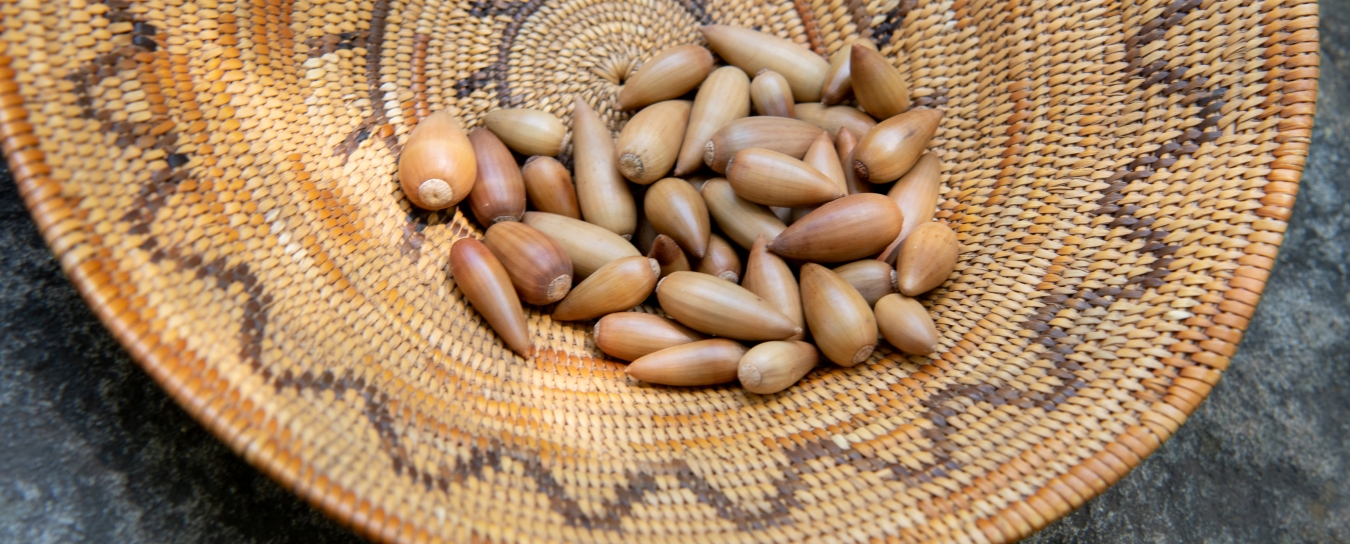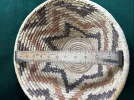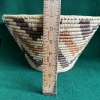
Anthropology
Check our anthropology FAQ for information about artifacts and more. Our Chumash Life pages for teachers and students provide a basic introduction to some aspects of traditional daily life.
- Anthropology
- Rocks & Fossils
- Invertebrates
- Vertebrates
- Botany
- Astronomy
- Fungi
- General
- Recently Asked
Coil Basket
I would like to know if this basket is Native American made, or is a tourist trade knock-off. If my pictures are not adequate, or you need more information, please let me know.


Curator Response
Hi Roger,
Thank you for including these photos from two angles, with scale. Although there’s no substitute for seeing a basket in person, they are helpful.
Based on your photos, I think this is one of many imitation Native American baskets that are made in Nigeria and Pakistan, using Native-American-inspired designs with plant materials that are available in those areas, particularly palm leaves. Interestingly, I have seen baskets like this for sale in Indian-run gift stores at pueblos in the Southwest, presumably in the hope that buyers will (wrongly) assume they were locally Native-made. Sometimes Southwestern retailers are explicit about the origin, as you can see here online. They’re perfectly fine, well-made baskets, much more affordable than authentic Native American work.
Best,
Curator Emeritus of Ethnography Jan Timbrook, Ph.D.

